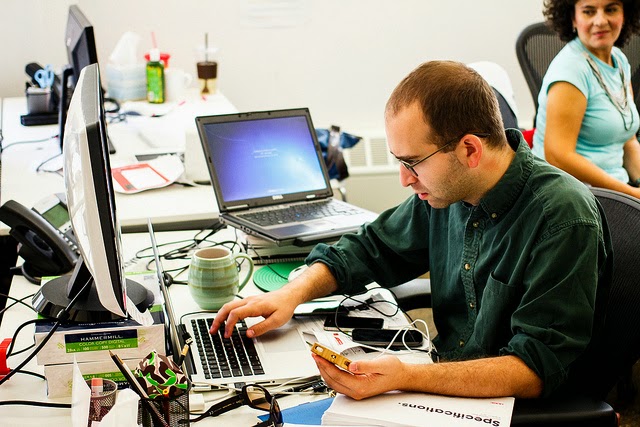In order to
handle the information that is coming from different directions, people have
had to do more than multi-task. Continuous Partial Attention (Stone in Jenkins,
2010) describes how attention does not just shift from task to task; rather,
attention is hyper-alert, processing information while completing a number of
tasks simultaneously.
As I complete
the readings for this week and write this blog post, I am also listening to
music, checking Twitter, texting and snacking on cookies. This is just one
personal example of CPA that now occurs in everyday life. The requirement of ‘deep
attention’ has shifted to ‘hyper attention’.
The concept of
an ‘attention economy’ (Goldhaber, 1997; Erard, 2009) goes well with our
contemporary digital media landscape – our attention is scarce, forcing the
plethora of online content to compete with each other. From an economic
perspective, namely the supply and demand of content/resources, the things we
pay attention to can influence what can be commonly accessed.
The digital commons
promote the distribution and shared ownership of online content to anyone with
access to the internet, demonstrating how interconnected society is on a global
scale (Meretz, 2010). They are an archive in itself, organised so as to
maximise public consumption of online content. Consider the way that hyperlinks
and recommended sites lead to related content, slowly but surely weaving a
tangled web (pun intended) around the individual. Thus, the internet has
facilitated accessibility, reaching a wider audience than ever before.
But what
determines which content should be
made commonly available to the public?
Public demand is
not, and should not be, the only factor. There are obvious reasons for why
company information and personal e-mails should remain private. However, with
published works like academic journals, paywalled news articles and geo-blocked
videos, the ethics become blurred. One must acknowledge intellectual property
and payment for information and services provided. Conversely, there is also transparency
and equal opportunity to access knowledge that must be considered. There
doesn’t seem to be a clear-cut answer, but establishing a standardised approach
across all publishing platforms could be the first step.
References:
Erard, M. 2009, ‘A short
manifesto on the future of attention’, Observatory, 8 December, accessed 29 August 2014, <http://observatory.designobserver.com/entry.html?entry=10297>
Goldhaber, M. H. 1997, ‘Attention
Shoppers!’, Wired, weblog post, accessed 29 August 2014, <http://www.wired.com/wired/archive/5.12/es_attention.html>
Jenkins, H. 2010, ‘Multitasking
and Continuous Partial Attention: An Interview
with Linda Stone (Part One)’, Confession
of an ACA-Fan, weblog post, 19 November, accessed 29 August 2014, <http://henryjenkins.org/2010/11/multitasking_and_continuous_pa.html>
Meretz, S. 2010, ‘Ten Theses
about Global Commons Movement’, P2P
Foundation, 1-2 November, accessed
30 August 2014, <http://blog.p2pfoundation.net/ten-theses-about-global-commons-movement/2011/01/05>


